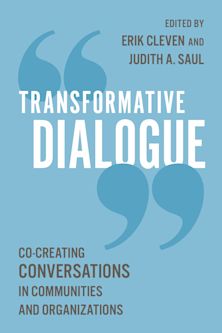- Home
- ACADEMIC
- Law
- ADR and Arbitration
- Culture, Conflict, and Mediation in the Asian Pacific
Culture, Conflict, and Mediation in the Asian Pacific
This product is usually dispatched within 3 days
- Delivery and returns info
-
Free CA delivery on orders $40 or over
You must sign in to add this item to your wishlist. Please sign in or create an account
Description
The countries of China, Taiwan, Singapore, Japan, Korea, Malaysia, Philippines, Indonesia, and Thailand are brought together for the first time in an integrated and systematic work outlining each country's cultural themes, cultural practices, and preferred conflict resolution mechanisms. The new "ADR" processes and centuries-old mediation and conciliation systems used in these countries are compared with the evolving mediation and ADR systems, including facilitation in North America and the West. This comprehensive study analyzes the cultural "themes" commonly found in these countries' religious conflicts; and presents over 30 different stories, case studies, and conflict resolution scenarios from the region. Culture, Conflict, and Mediation in the Asian Pacific looks beyond traditional regional boundaries to group Hawai'i with the nine Asian countries as an example of mediation systems and cultural influence on the most "Asian" of the U.S. states (over 2/3 of the population of Hawai'i is Asian-American).
Table of Contents
Chapter 2 Acknowledgements
Chapter 3 1. Asian / Pacific Cultures: A Node in the Conflict World
Chapter 4 2. Culture: Definitions and Dimensions
Chapter 5 3. Themes in Asian Dispute Resolution
Chapter 6 4. Face and Face-Work in Asian Conflict Resolution Practices
Chapter 7 5. China (People's Republic of China, Taiwan, Singapore)
Chapter 8 6. Japan
Chapter 9 7. Korea
Chapter 10 8. Philippines
Chapter 11 9. Malaysia
Chapter 12 10. Indonesia
Chapter 13 11. Thailand
Chapter 14 12. Hawai'i
Chapter 15 13. Asian Cultures and Conflict Resolution Practitioners: Some Approaches to Make Your Participation More Effective
Chapter 16 Appendix A. Training: Available Modules
Chapter 17 Glossary
Chapter 18 Bibliography
Chapter 19 Name and Subject Index
Chapter 20 About the Author
Product details
| Published | Apr 25 2006 |
|---|---|
| Format | Paperback |
| Edition | 1st |
| Extent | 192 |
| ISBN | 9780761834458 |
| Imprint | University Press of America |
| Dimensions | 228 x 163 mm |
| Publisher | Bloomsbury Publishing |
About the contributors
Reviews
-
How can people, businesses and governments effectively resolve intense private and public controversies in increasingly multicultural societies? [This] splendid path breaking book shines bright light on this topic. Bridging the theoretical and practical with "action research," and with seven Asian countries and Hawai`i as focal points, Barnes both unravels the emerging dangers of cultural conflicts and offers fresh insights into diverse Asian dispute resolution concepts and practices. A must read for everyone interested in multicultural dispute resolution.
Eric K. Yamamoto, Professor of Law and author of Interracial Justice: Conflict and Reconciliation in Post-Civil Rights America winner of the Gusta
-
Chapters focus upon the practices of each nation in turn, and over thirty case studies robustly illuminate the points and suggestions that can be learned for global application. An advanced reference and resource especially recommended for study and reference by aspiring and professional mediators, whether in law, social work, or other fields.
Midwest Book Review
-
Barnes' tour of the Asian Pacific and its disputing and mediation styles is eye-opening.
Asian Criminology
-
Many Americans seem to think mediation, the act of assisting others to negotiate peaceful and tractable solutions to their problems, is [newly] invented. Actually, it is an ancient and honored craft that spans 40,000 years of human history and the world's 4000 known culture and language groups. Bruce Barnes gives us a whirlwind tour of the intricate…forms mediation takes in the Asia and Pacific regions…More importantly, he…explains why culture and negotiation are inescapably braided together.
Peter Steven Adler, President, The Keystone Center, Ph.D., President, The Keystone Center


































